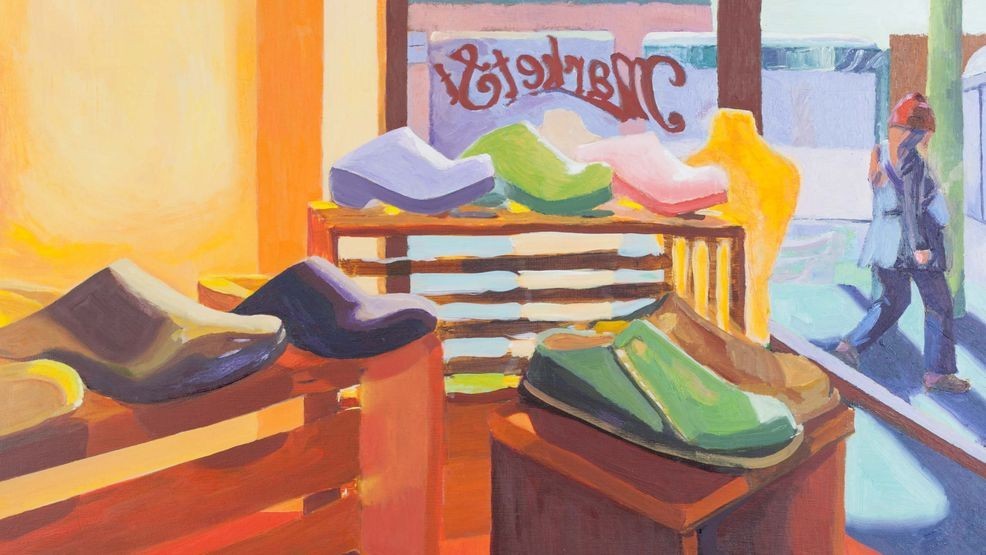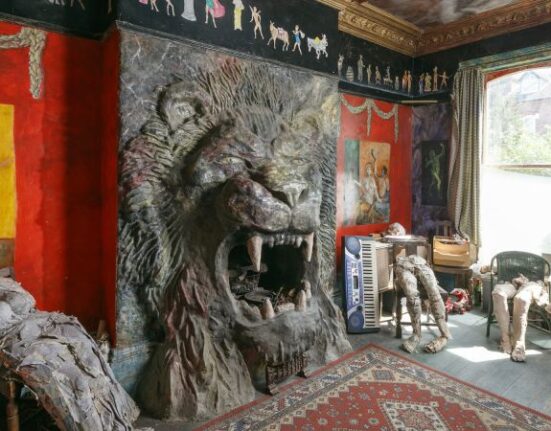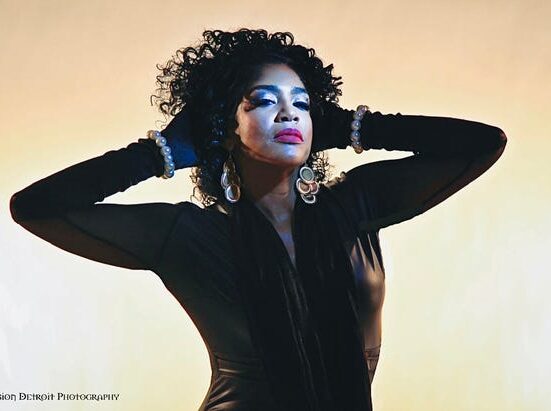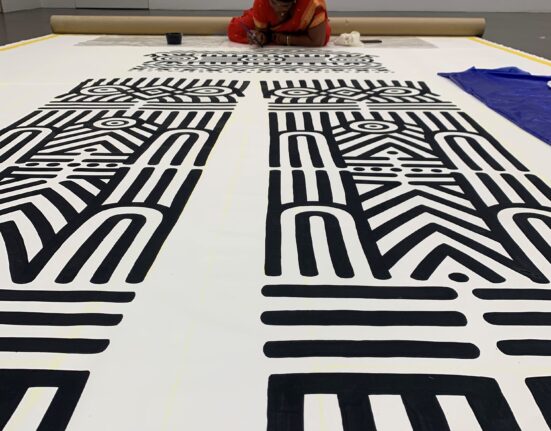Anne Livingston is a Seattle-based artist who primarily uses oil and acrylic paint. She is also an author and director of The Ballard Collective.
Seattle Refined: How long have you been creating? What mediums do you work with?
I’ve been painting for 30+ years and have worked as a full-time artist for almost seven years. I mostly use oil and acrylic paints. My work is also conceptual, so my third most-used “medium” is interaction or experiential engagement between artwork and viewer.
Can you tell us about your artistic process and how the different stages work into it?
I love a unifying idea. For example, my most recent painting series, “Shoe Show,” for Market Street Shoes, arose from the opening night coinciding with the shop’s 18th birthday party. I painted a series of joyful moments — with shoes. I also painted ON shoes during the party.
My initial research for a series includes photographing and collecting photos. In my studio color notebook, I make color studies to find a distinct and effective palette across the series.
For each image, I then make sketches, including a black-and-white value composition with brush and ink, called a “Notan sketch,” that reveals a simplified structure of darks and lights. I seek interesting angles and a composition that allows movement to guide the eye around the image. I like it when a strong composition helps us take a color journey on the canvas.
When it’s time to paint, I love painting quickly. It takes discipline, but I try to avoid over-refining or over-explaining the narrative with excessively careful details. Looser marks or simplified abstractions seem to keep my paintings more alive and dynamic. Imperfections are vulnerable parts that reveal my painting process, which I think opens a door to connection.
It makes me think about my cooking days. We would spend hours on the prep, getting our stations together, and then when service began, it became a quick and confident dance on the good days. Then it was “Order up!” and no time to re-think. The dish belonged to the guest now.
Tell us about where your inspiration for your art comes from.
I have a lifelong interest in color. One of my most treasured books is Josef Albers’ “Interaction of Color.” My mom gave me this book right before college after I had written a research paper about the psychology of color. I am fascinated by the material qualities of color, from pigment chemistry to making paint by hand, its utility as a visual and emotional tool, and its always-changing, subjective and beneficial qualities. This interest led to my MFA thesis last year. I developed a concept called “Slow Color,” which is the deliberate (or slow) use of color for beneficial purposes.
I explored how Slow Color is personal, technical, tangible, healing, connected to history, unifying and fun. It’s a grandchild of the Slow Food Movement. I made paintings to showcase these ideas. To make a more accessible offshoot of the thesis, I wrote a book called “Slow Color Project,” using my paintings as illustrations and inviting readers to go through a series of activities and experiments (technical, personal, healing, etc.) to deepen their relationships with color. My book’s structure was inspired by several works, including the beloved Albers book.
At my core, I am driven by service and by learning, demonstrated by my other life-focuses and professions, such as teaching, cooking and parenting. I ask myself, “How can I make paintings that benefit or reach out to the viewer? Can paintings act as tools for learning? Can they invite participation?”
Do you have a specific “beat” you like best – nature, food, profiles, etc.?
Lately, I like narratives of mundane moments. The regular day-to-day holds so much interesting beauty, especially when people are together. After pandemic isolation, I don’t take gatherings for granted anymore. I don’t mean to make post-pandemic art, but I keep doing it anyway.
Do you have one piece of art that means more to you or is extremely special to you?
Last year, I brought my “Slow Color Project” book to life at The Ballard Collective. This was my MFA thesis show. I separated the paintings (which had illustrated concepts in the book) into eight different areas of the building to represent each of the eight chapters, along with color-specific activity invitations found in the book. Participants traveled through all the “chapters” throughout the space, building a relationship with one specific color.
This experience knitted together everything I love most about my art practice: A close consideration of color, opportunities to learn, bringing people together and offering multi-modal and meaningful experiences to others. Implementing The Slow Color Project show offered me a way forward for future projects.
What experiences in your life have affected your art the most?
When I was young, I would stand behind my grandmother as she painted complex landscapes. Watching her mix paint on the palette, I witnessed nameless colors that were not found in a crayon box.
Experimental art pieces in our house also formed my art mind. As a grad student, my mom collected art from a local coop art gallery. I would sit and stare at the pieces with fascination, not sure how they were created.
In my early years, I attended an alternative school called Esperanza –The Outdoor School, based on the “Junk Playground,” or “Adventure Playground.” We built our own worlds with real tools, junk and other building materials, with freedom provided by adults offering presence but not active help, only assisting if asked. This formative schooling has shaped my approach to teaching, learning and making art. I want to make paintings and art experiences that leave the viewer with a sense of invitation or activation. I want to continue to think innovatively and resourcefully, like we did as kids when making a city on the playground or digging a whole river system across our school grounds.
Culinary school influenced my paintings’ materiality. Learning how to visually design a plate with food impacted my ideas about composition and surface quality. I love a painting that begs to be touched — that feels nourishing to look at.
If we want to see more of your work, where should we go to find it?
What is next for you? Anything you’re working on right now that you’re really excited about?
I have started a series called The Colors of Ballard, and I’m excited to research Ballard’s history more deeply, look closely at iconic neighborhood features and make a final show with interactive, interesting and fun components.
Lastly, how do you take your coffee? (We ask everyone!)
At home, it’s a short, strong aeropress with milk. Out in the world, I love a breve macchiato, especially from Vivace.
About ‘Artist of the Week’: This city is packed with artists we love to feature weekly on Seattle Refined! If you have a local artist in mind that you would like to see featured, let us know at hello@seattlerefined.com. And if you’re wondering just what constitutes art, that’s the beauty of it; it’s up to you! See all of our past Artists of the Week in our dedicated section.







